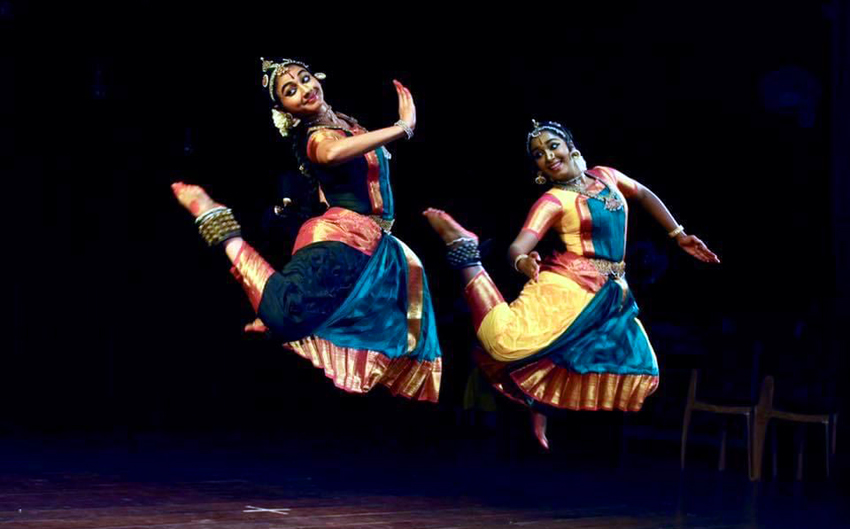Bhuvi Bharat Mein Hari Nache, Natwar Nartan Laas
Sohi Mein Nachat Rahyo, Brij Mein Hari Ke Paas
Tandav Vidhi ki laya Bhari, Lasya Ang ke Bhaav
Natwar Nartan Naam Dhari, Nachahu Sahaj Swabhaav
–Pothy Prakash, 18 CE
The Pothy Prakash describes Kathak as the dance of Natawar Krishna, a juxtaposition of the unchangeable ‘vidhi’ and kaleidoscopic ‘swabhaav’. In the Vishnu Dharmottara Purana, Markandeya describes how sadhana based on the dance of Vishnu is the easiest path to liberation or ‘moksha’.
 Thus at the outset, one can consider Kathak as a way of life, that is a path towards the ultimate goal. That said, one has to undergo the journey of life with its myriad pathways to keep returning back to that one nebulous path, that could take the seeker on the journey within. The four goals of life or the four puruṣārthas – Dharma (moral values), Artha (prosperity), Kama (pleasure) and Moksha (liberation) are intricately connected with the journey of both the art and the artist; and are the paving stones of what constitutes a ‘jeevan pranali’ or way of life. A key element is that pursuit of any one of the four goals cannot be done independently of the other three, thus even in a world where the art industry is driven by the economy, the elements of dharma and moksha exist akin to the hidden roots of a tree.
Thus at the outset, one can consider Kathak as a way of life, that is a path towards the ultimate goal. That said, one has to undergo the journey of life with its myriad pathways to keep returning back to that one nebulous path, that could take the seeker on the journey within. The four goals of life or the four puruṣārthas – Dharma (moral values), Artha (prosperity), Kama (pleasure) and Moksha (liberation) are intricately connected with the journey of both the art and the artist; and are the paving stones of what constitutes a ‘jeevan pranali’ or way of life. A key element is that pursuit of any one of the four goals cannot be done independently of the other three, thus even in a world where the art industry is driven by the economy, the elements of dharma and moksha exist akin to the hidden roots of a tree.
The word ‘Sanskaar’ has a number of possible translations. It could be connected with culture, upbringing, values and behaviour. But none of them resonates completely the significance of this word. The journey of dance begins with first imbibing the aangik vocabulary of the dance into the body or the sthul sharir, which connects with sagun saakara (both quality and form). The next step is the transference of the effects of these movements into the physiological inner space or the sukshma sharira, which connects with sagun nirakaar(with quality but no form). This then transfers to the kaarana sharira or aatma that has no form or quality. What is absorbed into this formless space within us is an untangible imprint(sanskaar) that can best be described as ‘bhaav’. These sanskaaras translate over lifetimes and are truly the only aspect of a human life that one can take forward from one lifetime to the next.
This is where that untangible imprint or sanskaar connects with Nritya (Nrityam Bhavashrayam). Nritya a combination of the movement vocabulary and emotional states, when practised as a sadhana, develops these sanskaras in the sadhakas thus connecting them with the pranali of life.
The kathavachaks or travelling bards were a medium of mass communication. The stories they weaved drew on lessons from itihasa like Mahabharat or Ramayana. Abhinavagupta and Bhatta Nayaka, ~10th CE, speak of Saadharanikarana – art enabling the viewer to live the emotions, thus a tool for thought inception. The kathavaachan tradition of kathak thus offers an excellent format for spiritual communication. The Communicator(the kathak dancer) and The Subject(the audience) are bound through The Objective– attainment of the puruṣārthas.
Just like any other mainstream subject, Kathak training has the inherent ability to develop the mind. For an artist to perform, the most important tenet is to be in the present moment. This is what constitutes meditation-in-motion, when an outer movement connects with an inner stillness. Similarly, the ‘sam’ in Kathak is many times elusive. Each time a kathak dancer doesn’t reach the ‘sam’, it is not an indication to give up but to pick up the thread and try again. Thus there is inherent conditioning to adapt to failure and not give up, a life skill very crucial in the rat race today.
In conclusion, for me personally, Kathak is a path to salvation. The ethos of spiritual surrender runs like an eternal thread through history linking the poets and seekers within the fold of the Kathak tradition, like pearls in a necklace. It is for the kathakaars of today to understand this unified thought and add themselves like pearls into the very same necklace, that connects us for eternity, thus making us ‘patras’ suitable for spiritual growth and transference.











